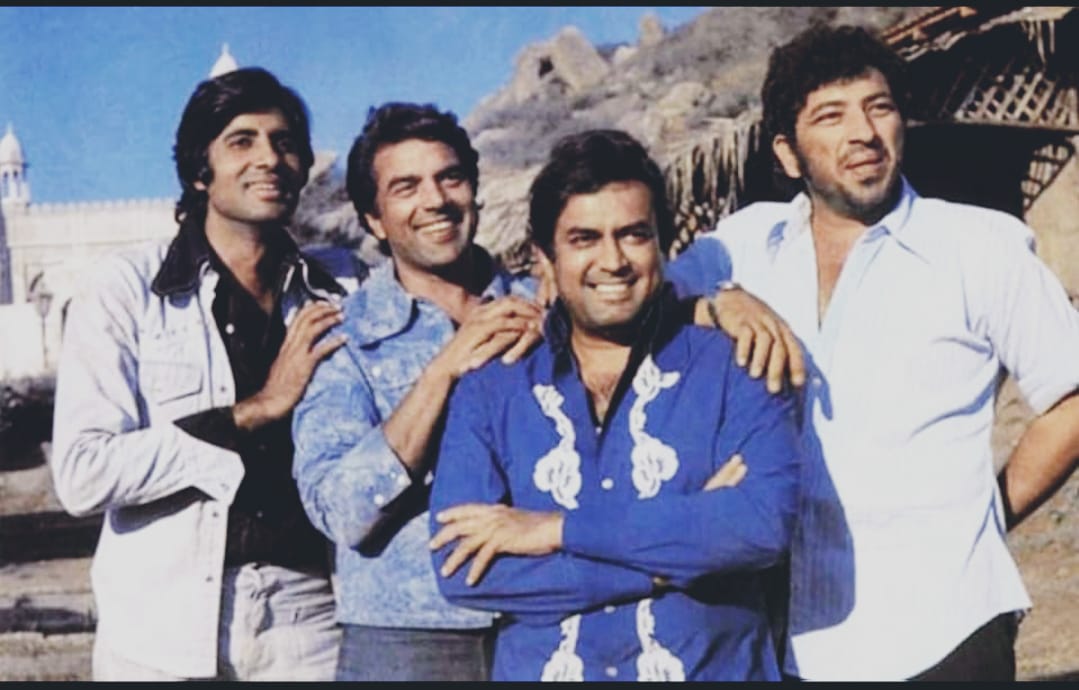India & World UpdatesHappeningsBreaking News
Sholay at 49: The legacy of Bollywood’s timeless classic, writes Shanku Sharma

//Shanku Sharma//
On August 15, 1975, Indian cinema witnessed the birth of a legend—Sholay. Directed by Ramesh Sippy, this film wasn’t just a box office sensation; it redefined Bollywood’s landscape, setting a new standard for storytelling, character development, and cinematic technique. As Sholay completes 49 years, its impact remains profound, reminding us why it continues to be celebrated as one of Indian cinema’s greatest masterpieces.
Released during the tumultuous period of the Emergency, Sholay came as a much-needed escape for the Indian audience. Initially, the film had a slow start at the box office, but within weeks, it became an unstoppable force. Its narrative, often described as a “curry western,” skillfully blended elements of Hollywood’s Western genre with the heart of Indian storytelling.
Set in the fictional village of Ramgarh, Sholay introduced audiences to a host of unforgettable characters—each more iconic than the last. Whether it was the righteous but tormented Thakur Baldev Singh (Sanjeev Kumar), the unbreakable bond between the outlawed duo Jai (Amitabh Bachchan) and Veeru (Dharmendra), or the unrelenting terror of Gabbar Singh (Amjad Khan), the film created personalities that transcended the screen.
At its core, Sholay was about friendship, justice, revenge, and love, all set against the backdrop of rural India. It was the film’s technical brilliance, though, that set it apart from its contemporaries. Ramesh Sippy’s direction, combined with Salim-Javed’s sharp writing, created a narrative that felt ahead of its time. The cinematography by Dwarka Divecha captured sweeping landscapes and intense close-ups, giving the film an epic scale. The action sequences, choreographed by stunt director Veeru Devgan, were groundbreaking, raising the bar for future Bollywood films.
The film’s music by R.D. Burman became as iconic as the characters themselves. Songs like “Yeh Dosti,” “Mehbooba Mehbooba,” and “Haan Jab Tak Hai Jaan” became instant classics, adding to the film’s mass appeal. Even the dialogues from Sholay—crafted by Salim-Javed—became a part of everyday conversation, with lines like “Kitne aadmi the?” and “Tera kya hoga, Kaalia?” forever etched in popular culture.
One of the key reasons for Sholay’s lasting legacy is its cast of complex, larger-than-life characters. Gabbar Singh, portrayed by Amjad Khan, is one of the most feared villains in Indian cinema. His gravelly voice and menacing presence created a character that is still referenced today. Gabbar wasn’t just evil; he was a symbol of lawlessness, embodying the dangers that the heroes had to confront.
Jai and Veeru, with their camaraderie and contrasting personalities, became the quintessential representation of friendship. Amitabh Bachchan’s brooding intensity as Jai complemented Dharmendra’s lighthearted charm as Veeru, creating a duo that resonated with the audience on a deeply emotional level. Their friendship wasn’t just about fun and laughter; it was a bond of loyalty that ultimately demanded sacrifice.
Hema Malini’s Basanti and Jaya Bhaduri’s Radha brought in strong female characters who, despite the male-dominated storyline, held their own. Basanti’s spirited nature and Radha’s silent strength gave depth to the narrative, showcasing the different shades of womanhood.
As Sholay celebrates its 49th anniversary, its influence on Indian cinema and pop culture is undeniable. Filmmakers continue to draw inspiration from its storytelling, character arcs, and cinematic techniques. Even today, the film is regularly rewatched, dissected, and celebrated by new generations of cinephiles who discover its magic for the first time.
From tributes in newer films to fan-made recreations of famous scenes, Sholay lives on not just as a film but as an essential part of India’s cultural fabric. It’s a reminder of Bollywood’s potential to create larger-than-life stories that can move, entertain, and inspire across decades.
Sholay isn’t just a film; it’s an experience that has endured for nearly half a century. As it edges closer to its golden anniversary, the film continues to symbolize the peak of Indian cinema—a perfect blend of art, entertainment, and emotion that will forever hold a special place in the hearts of millions.

